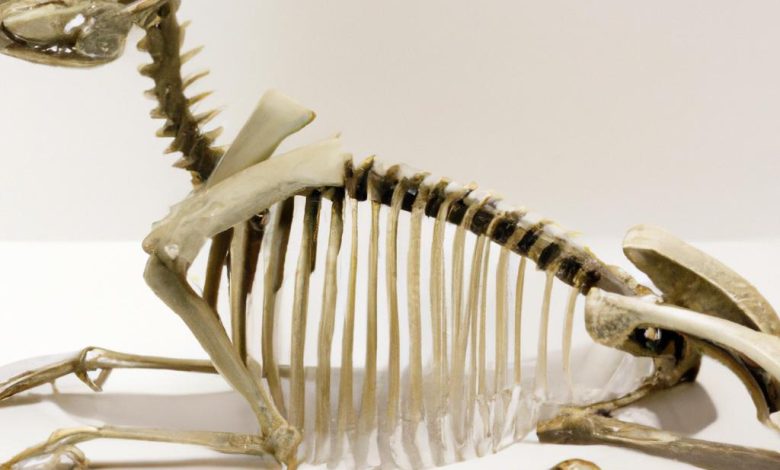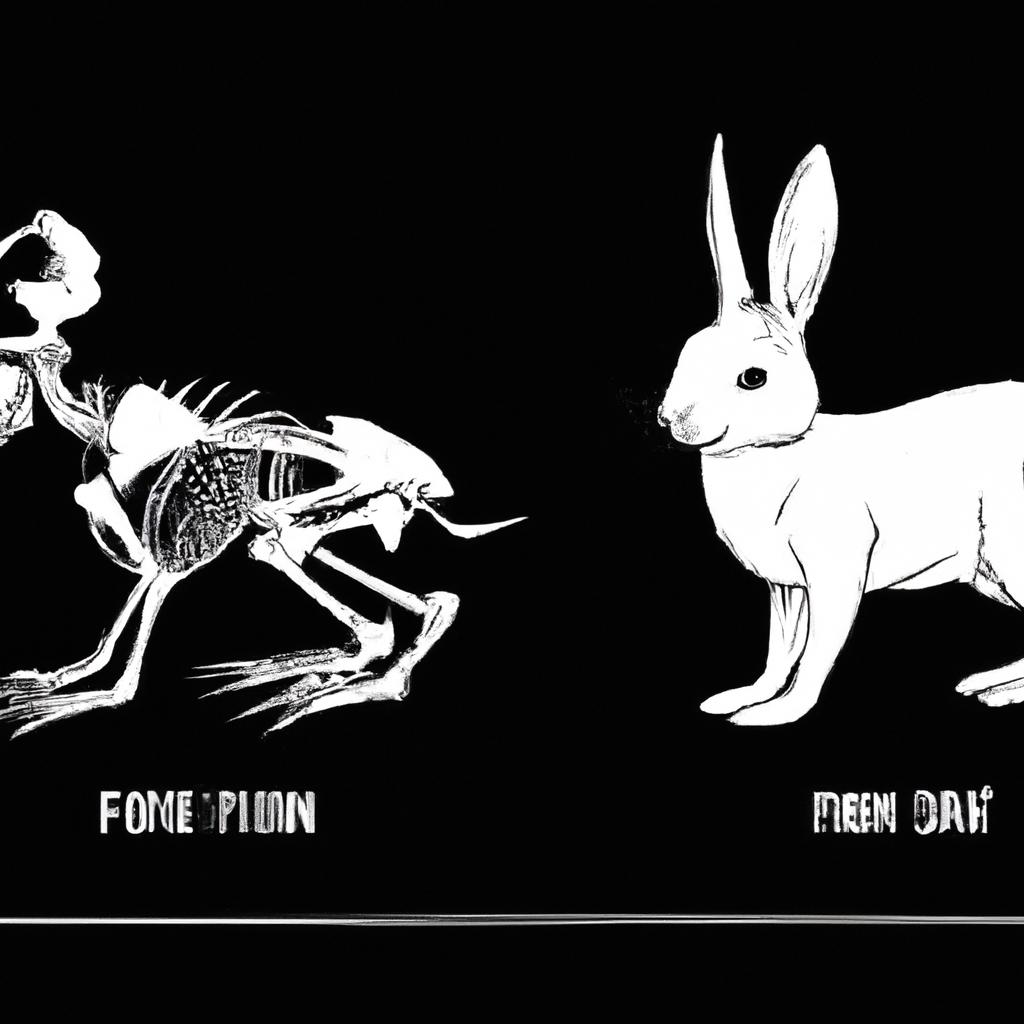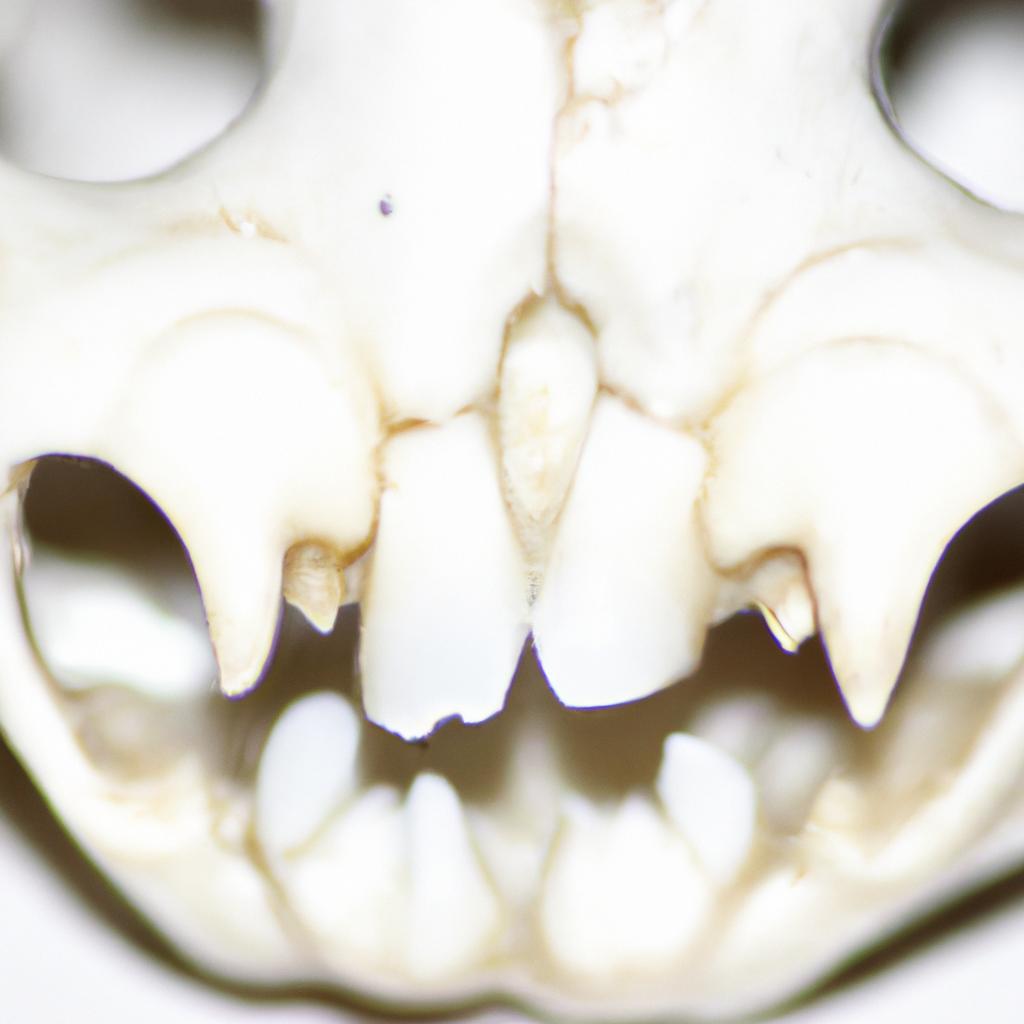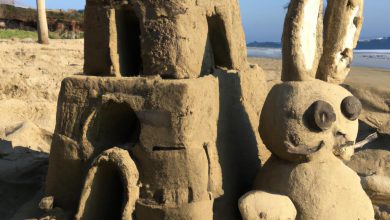The Skeleton of a Rabbit: Understanding the Structure and Function

When we think of rabbits, we often picture their cute, fluffy exterior and their adorable twitching noses. However, beneath their soft fur lies a complex and fascinating skeletal system. In this article, Rabbitfact‘ll explore the anatomy, function, and adaptations of the skeleton of a rabbit.
A rabbit’s skeleton is the foundation of its body, providing structure and support for its muscles and organs. From the tip of its ears to the end of its tail, every part of a rabbit’s body is influenced by its skeletal system. Understanding how a rabbit’s skeleton works is essential for pet owners, veterinarians, and scientists alike.
In this article, we’ll delve into the intricacies of a rabbit’s skeletal system, exploring the different bones that make up its body, how they function, and how they have adapted over time. Whether you’re a rabbit enthusiast or just curious about the inner workings of these adorable creatures, this article is for you. So, let’s hop right in!
Anatomy of a Rabbit Skeleton

Rabbit skeletons are incredibly intricate and consist of numerous bones, each with its own unique purpose. Here’s a breakdown of the different bones in a rabbit’s body:
A. Description of the Different Bones in a Rabbit’s Body
The skull of a rabbit is composed of several bones, including the maxilla, zygomatic, and nasal bones. The teeth of a rabbit are also an important part of its skeletal system, with a total of 28 teeth, including incisors, molars, and premolars.
Moving down the body, the cervical vertebrae, or neck bones, support the head and allow for a range of movement. The thoracic vertebrae, or chest bones, attach to the ribs and sternum, forming the ribcage that protects the heart and lungs. The lumbar vertebrae, or lower back bones, connect the thoracic vertebrae to the sacrum, which is the fused bone that makes up the pelvic area.
The hindlimbs of a rabbit are essential for movement, and its skeleton reflects this. The femur, or thigh bone, is the largest bone in the body and connects to the tibia and fibula bones in the lower leg. The feet of a rabbit are also unique, with a total of five toes, including four toes that touch the ground and one dewclaw that does not.
B. Comparison of Rabbit Skeleton to Other Animal’s Skeletons
Compared to other animals, a rabbit’s skeleton is distinct. For example, their front legs are shorter than their hind legs, allowing for a distinctive hopping gait. Additionally, the structure of their skull and teeth is unique, reflecting their herbivorous diet.
C. Importance of Each Bone in the Rabbit’s Body
Each bone in a rabbit’s body serves a crucial purpose. For example, the ribcage protects the heart and lungs, while the hindlimbs allow for movement. Understanding the role of each bone is essential for veterinarians and pet owners, allowing them to diagnose and treat injuries or illnesses that may affect the skeletal system.
The Function of a Rabbit Skeleton

When it comes to movement, the skeleton of a rabbit plays a vital role. The bones in a rabbit’s body work together to provide support, stability, and flexibility, allowing them to hop, run, and jump with ease.
How the Skeleton Aids in Movement
Rabbit’s hind legs are much longer and more powerful than their front legs, which gives them the ability to hop and run at high speeds. The bones in their hind legs, such as the femur and tibia, are longer and more robust than those in their front legs. This allows them to generate more force when pushing off the ground, propelling them forward with each hop.
The bones in a rabbit’s spine also play a significant role in their movement. Unlike many other animals, rabbits have a flexible spine that allows them to contort their bodies to fit through tight spaces and make quick, sharp turns.
Comparison of the Rabbit’s Skeleton to Other Animal’s Skeletons in Terms of Movement
Compared to other animals, the rabbit’s skeleton is highly specialized for hopping and running. For example, the kangaroo’s skeleton is also adapted for hopping, but their hind legs are much longer and more powerful than the rabbit’s, allowing them to cover greater distances with each hop.
Importance of the Skeleton in the Rabbit’s Survival
The ability to move quickly and efficiently is crucial for a rabbit’s survival. Their speed and agility allow them to avoid predators, find food and mates, and explore their surroundings. Without a strong and flexible skeletal system, rabbits would not be able to survive in their natural habitats.
Rabbit Skeleton Adaptations
Rabbits have been around for millions of years, and their skeletal system has adapted over time to help them survive in their various environments. Let’s explore some of the adaptations that have helped the rabbit’s skeletal system evolve.
A. Evolution of the Rabbit’s Skeleton
The rabbit’s skeletal system has evolved to help it cope with its unique way of life. As herbivores, rabbits need to be able to move quickly to escape predators, while also being able to dig burrows to hide from danger. Over time, their bones have become lighter and stronger, allowing them to move quickly and efficiently.
One of the most notable adaptations in the rabbit’s skeleton is its long hind legs, which allow it to run and jump with great speed and agility. These legs have evolved to be longer than their front legs, giving them the ability to make sharp turns and sudden stops. Additionally, the rabbit’s spine is highly flexible, allowing it to twist and turn easily to avoid predators.
B. Comparison to Other Animal Skeletons
Compared to other animals, the rabbit’s skeletal system is unique in many ways. For example, their long hind legs are similar to those of kangaroos, which allows them to hop quickly and efficiently. However, their flexible spine is more similar to that of a snake or lizard, allowing them to twist and turn in a way that other mammals can’t.
Additionally, rabbits have a unique set of teeth that are constantly growing. This adaptation allows them to wear down their teeth, which can become overgrown due to their diet of tough, fibrous plants.
C. Importance of Adaptations in Rabbit Survival
The adaptations in the rabbit’s skeletal system are crucial to their survival. Their ability to move quickly and efficiently allows them to escape predators and find food, while their flexible spine and long hind legs give them the agility they need to navigate their environment. Without these adaptations, rabbits would not be able to survive in their various environments, making their skeletal system a key factor in their success as a species.
Rabbit Skeleton in Science
When it comes to scientific research, rabbit skeletons have proven to be incredibly useful tools. Let’s take a closer look at how scientists use rabbit skeletons and why they are so valuable.
Explanation of how scientists use rabbit skeletons in research
Rabbit skeletons are commonly used in a variety of scientific studies. For example, researchers may study the skeletal system of rabbits to better understand how bones heal after fractures or how diseases affect bone density. In some cases, scientists may use rabbit skeletons to test new medical treatments or surgical techniques.
Comparison of rabbit skeletons to other animal’s skeletons in terms of scientific research
Compared to other animal skeletons, rabbit skeletons are particularly useful for scientific research. This is because they are relatively small and easy to handle, making them ideal for experiments in a laboratory setting. Additionally, rabbits are commonly used in medical research, which means that their skeletons are readily available for scientists to study.
Importance of rabbit skeletons in scientific studies
Overall, rabbit skeletons are incredibly important tools for scientific research. By studying the skeletal system of rabbits, researchers can gain valuable insights into bone development, disease, and healing. Additionally, rabbit skeletons are often used to test new medical treatments and surgical techniques, which can ultimately lead to better outcomes for human patients.
In conclusion, the use of rabbit skeletons in scientific research is a crucial aspect of our understanding of the skeletal system and its role in overall health. Thanks to their small size and availability, rabbit skeletons have become a go-to tool for researchers seeking to explore the complexities of bone structure and function.
Conclusion
In conclusion, understanding the skeleton of a rabbit is crucial for anyone interested in these adorable creatures. From pet owners to veterinarians and scientists, knowing the anatomy, function, and adaptations of a rabbit’s skeletal system can provide valuable insights into their health, behavior, and evolution.
Throughout this article, we’ve explored the different bones that make up a rabbit’s body, how they function, and how they have adapted over time. We’ve also seen how scientists use rabbit skeletons in research and how these skeletons compare to other animal skeletons.
As a final thought, if you’re a rabbit enthusiast, learning about their skeletal system is a great way to deepen your understanding and appreciation of these incredible creatures. And if you’re a pet owner, understanding how your rabbit’s skeleton works can help you provide better care for them.
Thank you for reading this article on the skeleton of a rabbit. We hope you found it informative and enjoyable. For more information about rabbits, visit our website at rabbitfact.com.
Conclusion: So above is the The Skeleton of a Rabbit: Understanding the Structure and Function article. Hopefully with this article you can help you in life, always follow and read our good articles on the website: rabbitfact.com





